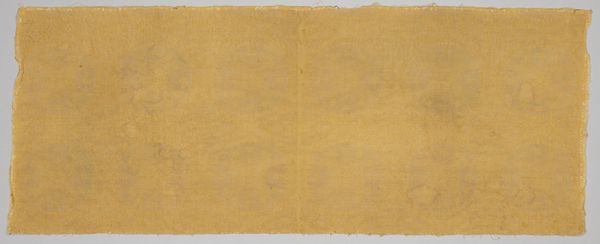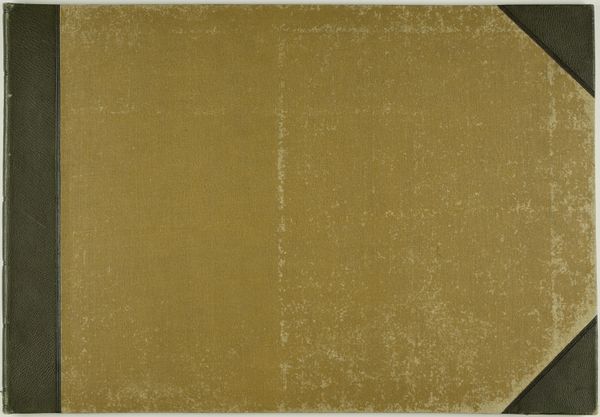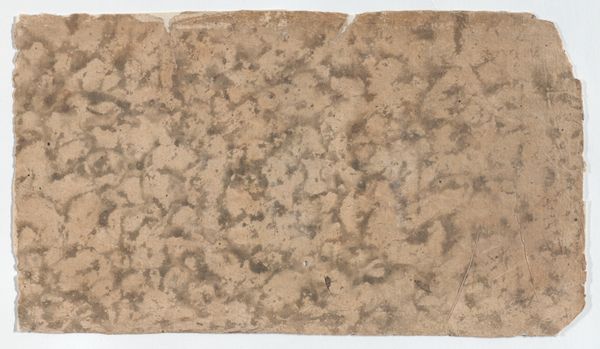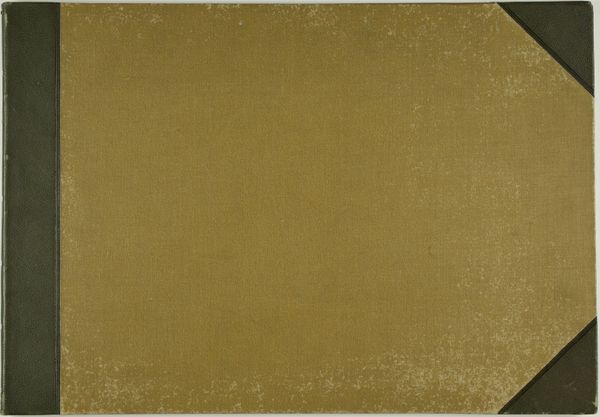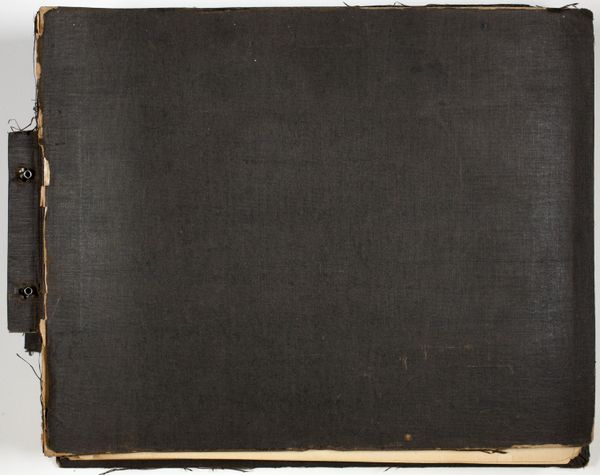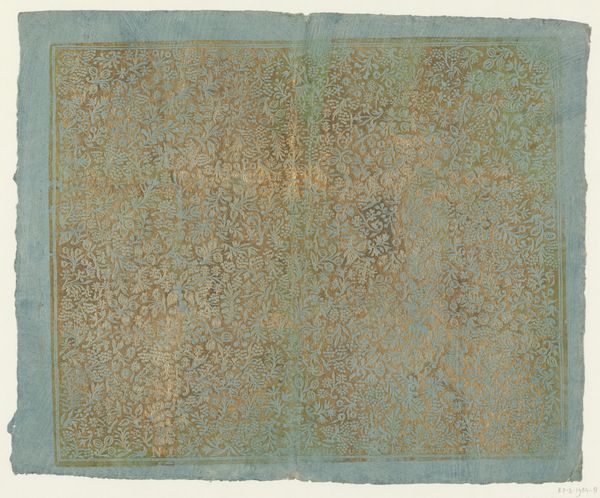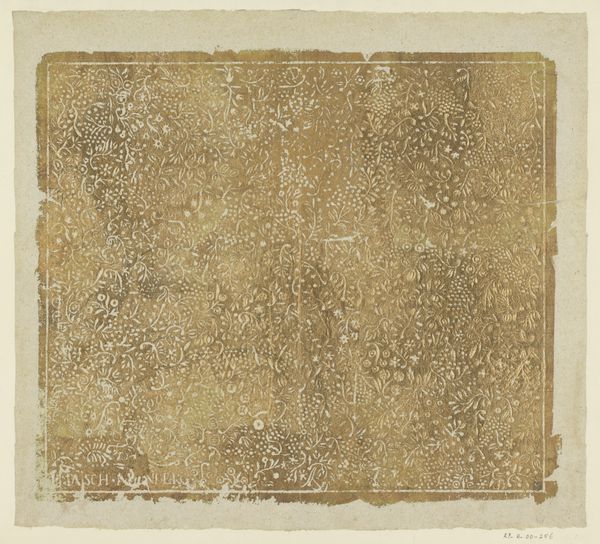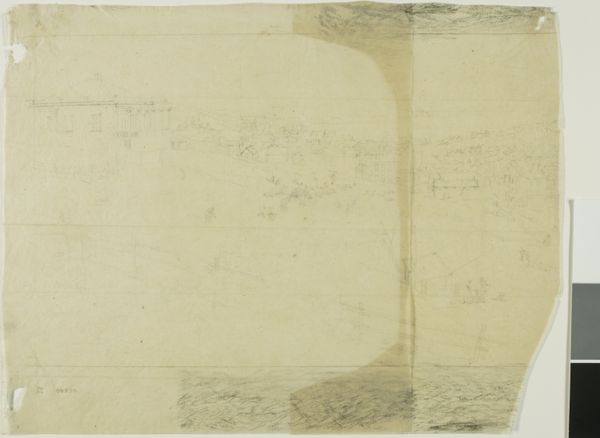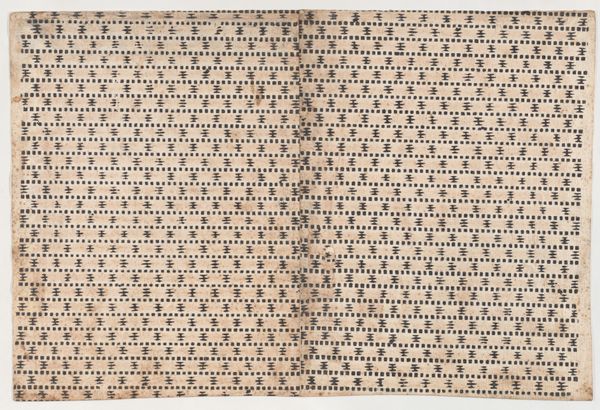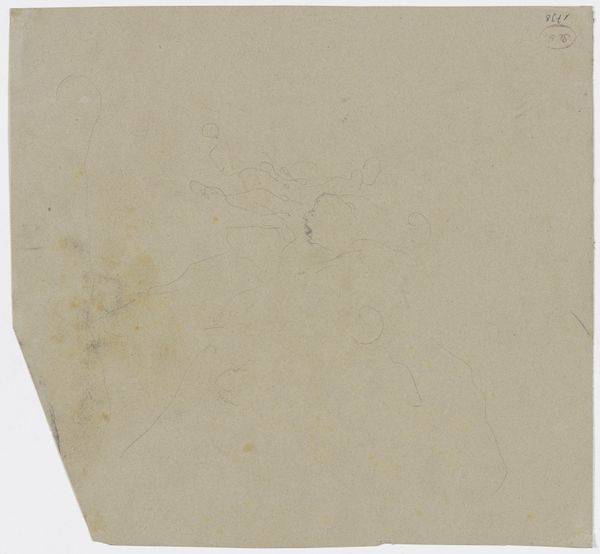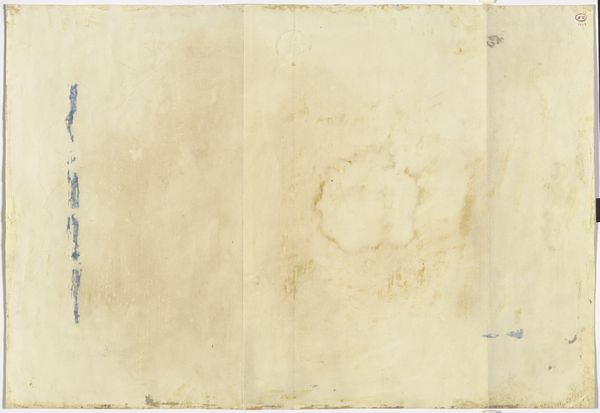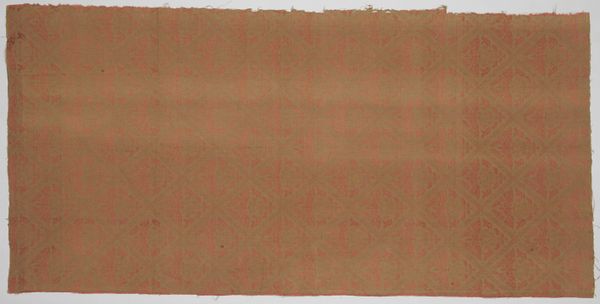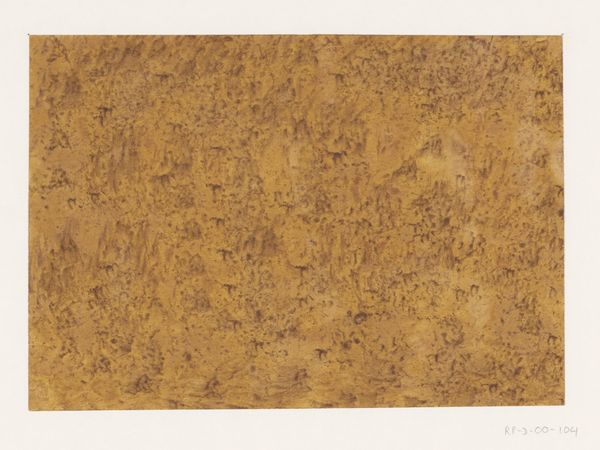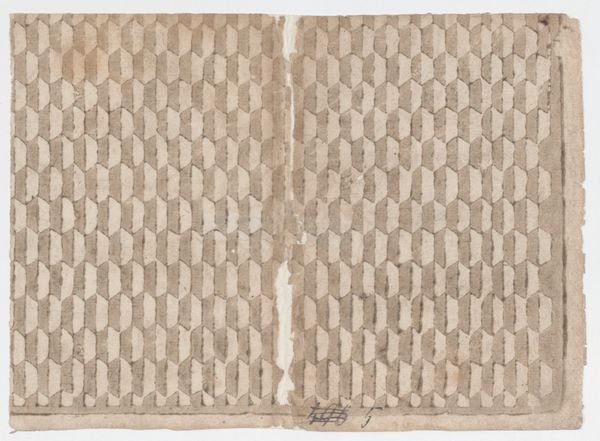
Regelmatig patroon van bloemmotief op goudkleurig metaalpapier c. 1870 - 1950
0:00
0:00
paper
#
organic
#
art-nouveau
#
pattern
#
paper
#
organic pattern
#
orientalism
#
abstraction
#
decorative-art
Dimensions: height 373 mm, width 507 mm
Copyright: Rijks Museum: Open Domain
Editor: This artwork is called "Regular Pattern of Floral Motifs on Gold-Colored Metal Paper," created sometime between 1870 and 1950, and is on display here at the Rijksmuseum. The artist is Theo Nieuwenhuis. It has a very calming, repetitive feel to it. What strikes you when you look at it? Curator: The allure of this work, quite simply, resides in its visual components. Notice how the artist skillfully utilizes the floral motif to establish a complex yet harmonious structure. It beckons consideration from a formalist perspective; what are your initial thoughts about its formal qualities? Editor: Well, the color palette is quite limited, mainly gold tones, which gives it a rich feel, and the floral pattern is consistently repeated. It’s visually interesting, but I’m not sure what to make of the repetition. Curator: Indeed, the restricted palette emphasizes the structure, inviting an engagement with semiotics. Consider how the artist manipulates this basic element to orchestrate the interplay between figure and ground. Is there anything remarkable you observe in that dynamic? Editor: I suppose the ground feels less important, the color more muted and not sharply delineated from the figure. The flowers dominate because of their radiating forms. Curator: Precisely. Note further how the repetition fosters rhythm; this rhythm leads the eye through a network of relationships between part and whole, reflecting back upon the totality. Is it the totality that pleases or an examination of small fragments that brings out the joy? Editor: I think it’s both; seeing the interconnectedness but also noticing small, interesting things as I observe. I can see how this sort of detailed, close looking would yield an appreciation of the intrinsic structure of art. Curator: The structural interplay offers a way to experience the aesthetic autonomy. Do you find value in detaching such pieces from social contexts in order to hone an appreciation of fundamental aesthetic form? Editor: Initially I didn't, but I think I’m starting to see value in this, and will start using a different perspective in the future when I look at art. Thanks.
Comments
No comments
Be the first to comment and join the conversation on the ultimate creative platform.
